figganigga
JF-Expert Member
- Oct 17, 2010
- 25,492
- 54,895
MS804 black box is FOUND: Breakthrough in the mystery of EgyptAir crash as cockpit voice recorder is pulled from the depths of Mediterranean
Egypt's investigation committee said the black box has been damaged but search crews managed to safely recover the memory unit 'which is the most important (part) in the recorder'.
The recorder was retrieved in 'several stages' and is currently being transferred from the vessel to the Egyptian port city of Alexandria.
Once on shore, it will be handed over to the members of the committee who will unload and analyze the data.
The announcement comes after a French research vessel found wreckage from doomed flight 804 which disappeared over the Mediterranean last month.

The Airbus A320, pictured here, crashed into the Mediterranean last month travelling from Paris to Cairo

A picture released today shows a diving robot on the search vessel John Lethbridge is sent down into the Mediterranean in the hunt for wreckage and the black boxes from EgyptAir flight MS804

The Airbus A320 vanished over the Mediterranean, circled, as it approached Cairo in Egypt on May 19
The Airbus A320 vanished on May 19 with 66 people on board while en route between Paris to Cairo.
The deep ocean search vessel John Lethbridge has identified several main locations according to the Egyptian Investigation Committee.
The committee said late Wednesday that a vessel contracted by the Egyptian government to join the search efforts for the data recorders and the wreckage of the doomed A320 'had identified several main locations of the wreckage, accordingly the first images of the wreckage were provided to the investigation committee'.
Searchers have also found pieces of the missing jet's cabin and fuselage have been found at 'several sites'.
Based on the wreckage locations; The search team and investigators onboard of the vessel will draw a map for the wreckage distribution spots, it added
The plane disappeared from radar en route to Cairo from Paris.
No group has claimed responsibility for an attack.
The search has concentrated on an area between the Greek island of Crete and the Egyptian coast.
Air crash investigators are determined to recover the flight data recorder and the cockpit voice recorder to help determine what happened to the doomed jet.
So far, only small pieces of wreckage and some human remains have been recovered.

The deep ocean search vessel John Lethbridge (pictured) has identified several main locations for wreckage

A crew of the search vessel John Lethbridge. Egypt's investigation committee said the black box has been damaged but the memory unit 'which is the most important (part) in the recorder' had been recovered safely
Shortly before it vanished, the aircraft had been cruising normally at 38,000 feet when it turned 90 degrees to the left.
Moments later, it turned a full 360 degrees to the right and plummeted to 15,000 feet.
The jet vanished from radar at 10,000 feet.
Experts believe they have located the main wreckage locations, but they have until Friday to find the aircraft's black boxes, when the batteries on an electronic bleeper system are due to run out.
Once the batteries run out, the task of locating the black boxes will be far more difficult, but not impossible.

The John Lethbridge, pictured, has located several pieces of wreckage belonging to the Egypt Air jet

66 passengers and crew died on board the Airbus A320 when it crashed into the Mediterranean last month
A French vessel, Laplace, located signals from the ocean bed which could come from the black boxes.
The John Lethbridge has a special side scan sonar that can provide digital images of the seabed and is equipped with a submersible robot capable of diving to 10,000 feet.
The missing jet is believed to be lying in water at the very edge of the robot's capabilities.
While speculation initially centred on a terror attack, a technical fault has also not been ruled out, with automated messages sent by the plane shortly before its demise indicating smoke in the cabin and a fault in the flight control unit.
The crash took place seven months after the bombing of a Russian airliner over Egypt's restive Sinai Peninsula in October that killed all 224 people on board.
ISIS claimed responsibility for that attack. There has been no such claim over the EgyptAir crash.
Leaked flight data indicated a sensor detected smoke in a lavatory and a fault in two of the plane's cockpit windows in the final moments of the flight.

So far, only small pieces of wreckage, personal belongings and human remains have been recovered
Source: MS804 black box is FOUND: Cockpit recorder is pulled from the Med
- Egypt Air 804 vanished between Paris and Cairo with 66 people on board
- The jet is thought to be lying in 10,000 feet of water in the Mediterranean
- A specialist French research ship has found several sections of wreckage
- It is hoped a submersible robot can now recover the other data recorder
Egypt's investigation committee said the black box has been damaged but search crews managed to safely recover the memory unit 'which is the most important (part) in the recorder'.
The recorder was retrieved in 'several stages' and is currently being transferred from the vessel to the Egyptian port city of Alexandria.
Once on shore, it will be handed over to the members of the committee who will unload and analyze the data.
The announcement comes after a French research vessel found wreckage from doomed flight 804 which disappeared over the Mediterranean last month.
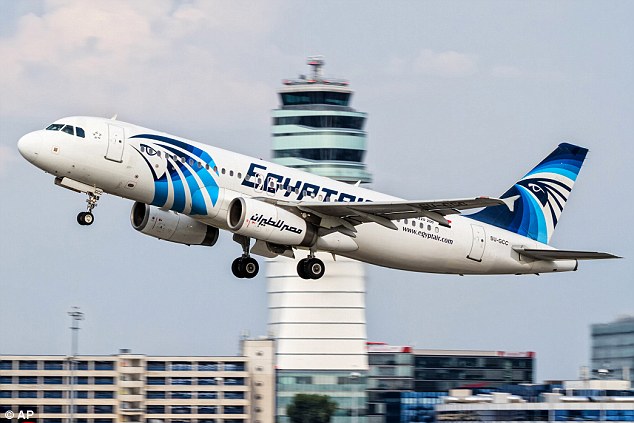
The Airbus A320, pictured here, crashed into the Mediterranean last month travelling from Paris to Cairo
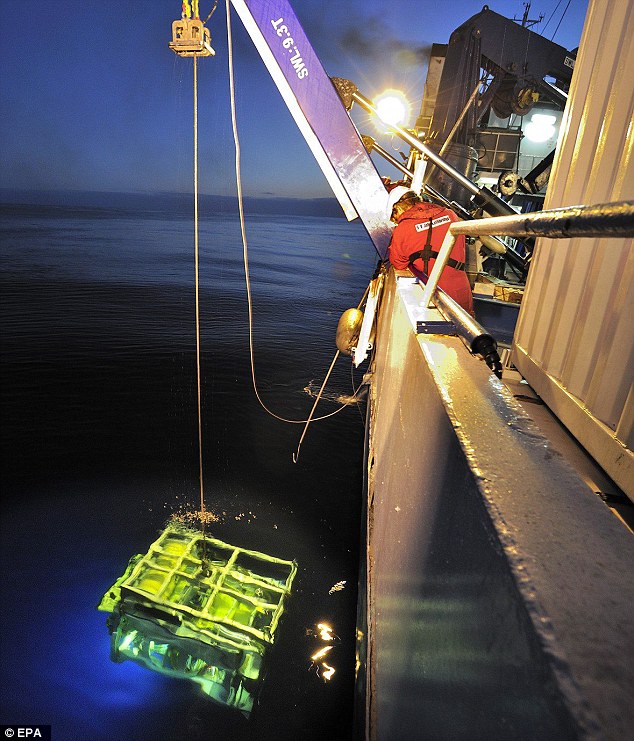
A picture released today shows a diving robot on the search vessel John Lethbridge is sent down into the Mediterranean in the hunt for wreckage and the black boxes from EgyptAir flight MS804
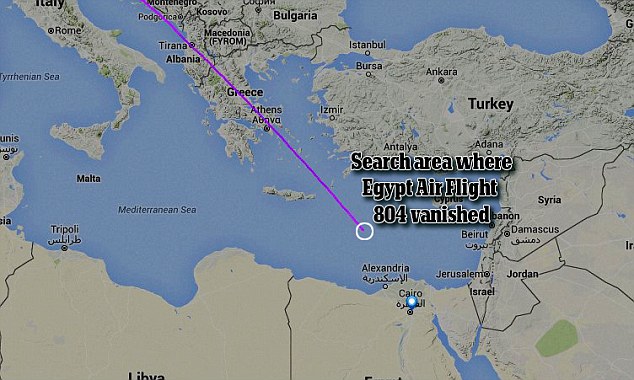
The Airbus A320 vanished over the Mediterranean, circled, as it approached Cairo in Egypt on May 19
The Airbus A320 vanished on May 19 with 66 people on board while en route between Paris to Cairo.
The deep ocean search vessel John Lethbridge has identified several main locations according to the Egyptian Investigation Committee.
The committee said late Wednesday that a vessel contracted by the Egyptian government to join the search efforts for the data recorders and the wreckage of the doomed A320 'had identified several main locations of the wreckage, accordingly the first images of the wreckage were provided to the investigation committee'.
Searchers have also found pieces of the missing jet's cabin and fuselage have been found at 'several sites'.
Based on the wreckage locations; The search team and investigators onboard of the vessel will draw a map for the wreckage distribution spots, it added
The plane disappeared from radar en route to Cairo from Paris.
No group has claimed responsibility for an attack.
The search has concentrated on an area between the Greek island of Crete and the Egyptian coast.
Air crash investigators are determined to recover the flight data recorder and the cockpit voice recorder to help determine what happened to the doomed jet.
So far, only small pieces of wreckage and some human remains have been recovered.
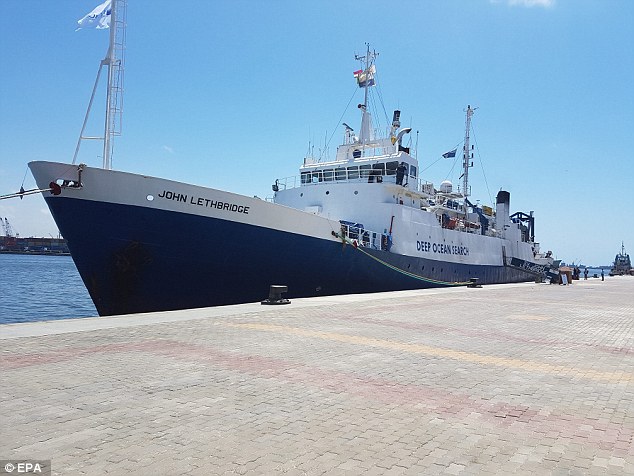
The deep ocean search vessel John Lethbridge (pictured) has identified several main locations for wreckage
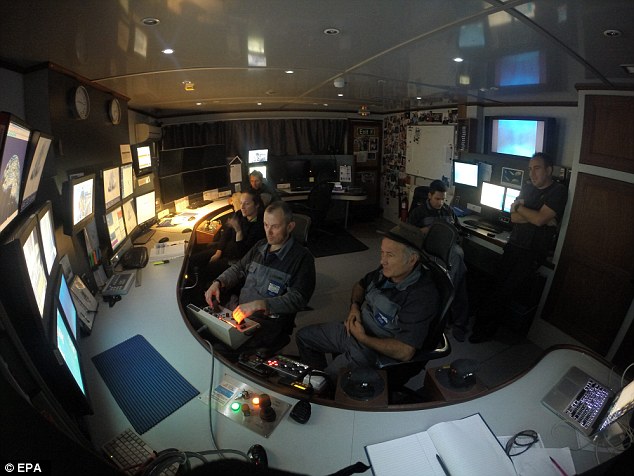
A crew of the search vessel John Lethbridge. Egypt's investigation committee said the black box has been damaged but the memory unit 'which is the most important (part) in the recorder' had been recovered safely
Shortly before it vanished, the aircraft had been cruising normally at 38,000 feet when it turned 90 degrees to the left.
Moments later, it turned a full 360 degrees to the right and plummeted to 15,000 feet.
The jet vanished from radar at 10,000 feet.
Experts believe they have located the main wreckage locations, but they have until Friday to find the aircraft's black boxes, when the batteries on an electronic bleeper system are due to run out.
Once the batteries run out, the task of locating the black boxes will be far more difficult, but not impossible.
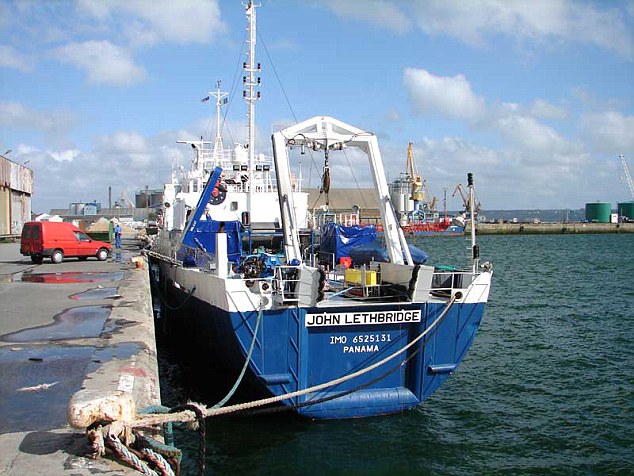
The John Lethbridge, pictured, has located several pieces of wreckage belonging to the Egypt Air jet
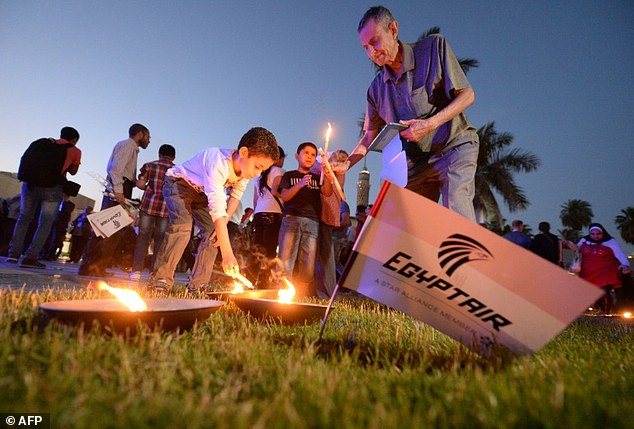
66 passengers and crew died on board the Airbus A320 when it crashed into the Mediterranean last month
A French vessel, Laplace, located signals from the ocean bed which could come from the black boxes.
The John Lethbridge has a special side scan sonar that can provide digital images of the seabed and is equipped with a submersible robot capable of diving to 10,000 feet.
The missing jet is believed to be lying in water at the very edge of the robot's capabilities.
While speculation initially centred on a terror attack, a technical fault has also not been ruled out, with automated messages sent by the plane shortly before its demise indicating smoke in the cabin and a fault in the flight control unit.
The crash took place seven months after the bombing of a Russian airliner over Egypt's restive Sinai Peninsula in October that killed all 224 people on board.
ISIS claimed responsibility for that attack. There has been no such claim over the EgyptAir crash.
Leaked flight data indicated a sensor detected smoke in a lavatory and a fault in two of the plane's cockpit windows in the final moments of the flight.
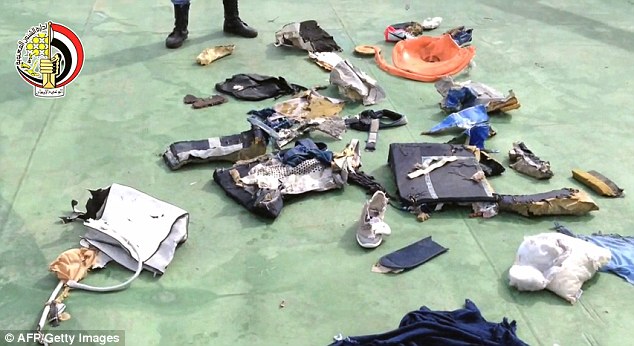
So far, only small pieces of wreckage, personal belongings and human remains have been recovered
Source: MS804 black box is FOUND: Cockpit recorder is pulled from the Med